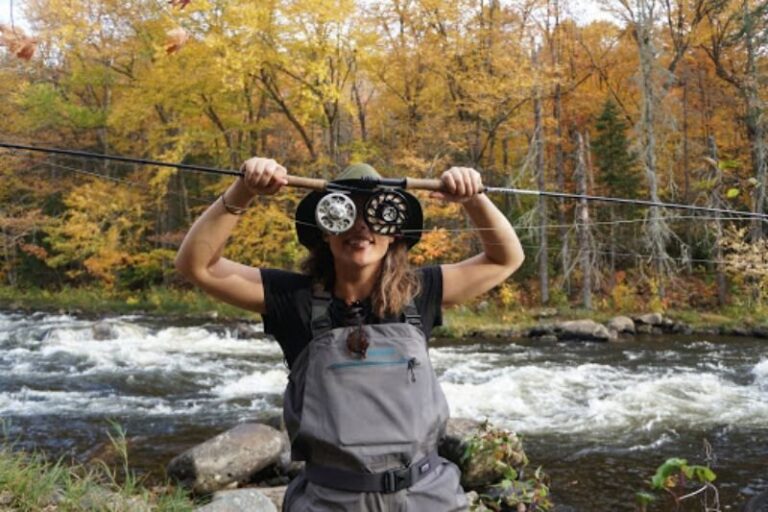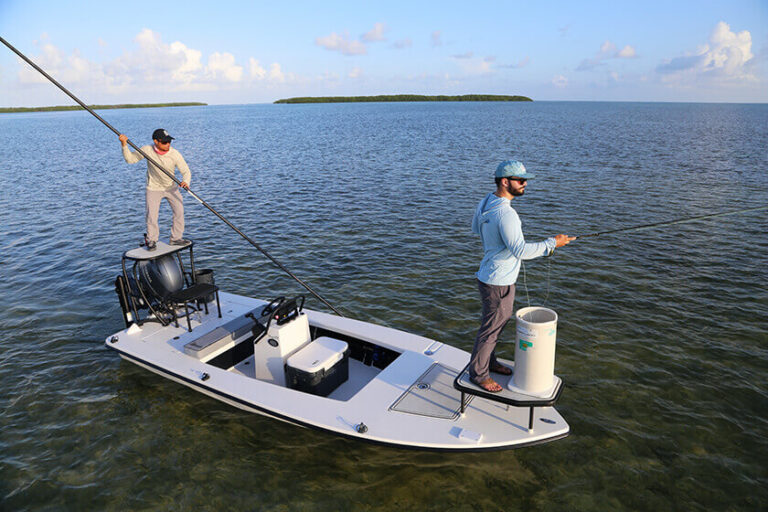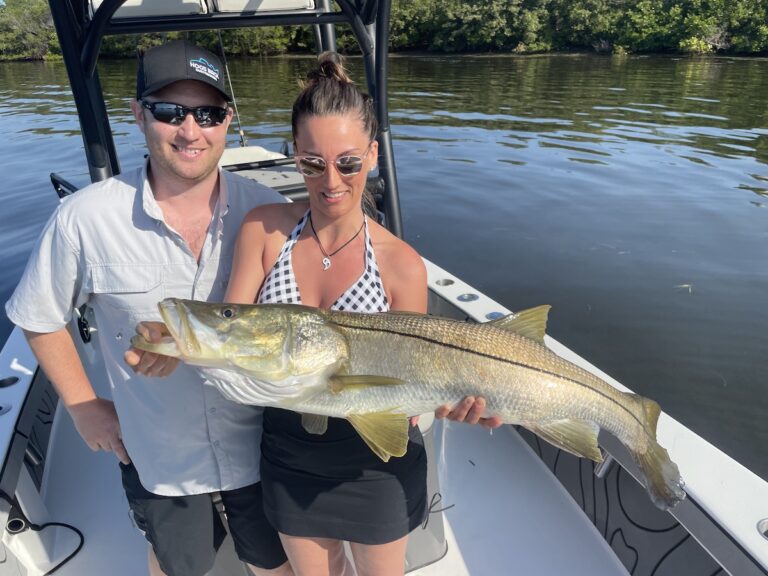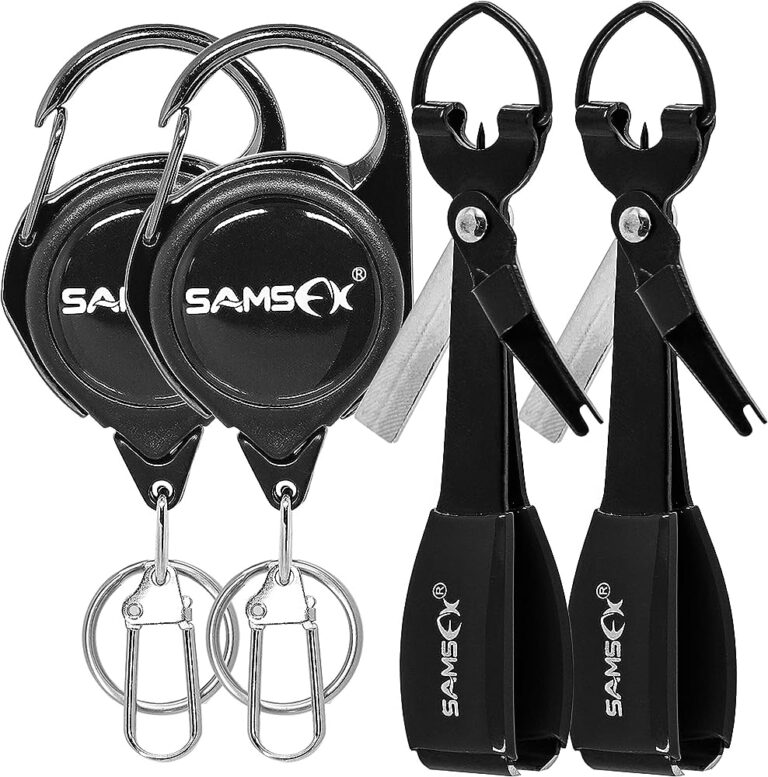Using tides to your advantage for flats fishing involves understanding tidal patterns and planning your fishing trips accordingly. By studying the tides and their effects on fishing spots, you can optimize your chances of success and catch more fish.
Tides play a crucial role in the world of fishing, especially when it comes to flats fishing. Those who know how to use tides to their advantage can significantly improve their chances of landing a big catch. Understanding tidal patterns and their impact on fishing locations is key to optimizing your fishing trips.
By being aware of the tide movements, you can plan your fishing outings strategically, focusing on the most productive times and areas. We will delve into the art of using tides to your advantage for flats fishing, providing valuable insights and tips to enhance your fishing experience and increase your chances of success. So, let’s dive in and discover the secrets of leveraging tides for a successful flats fishing adventure.

Credit: www.sportfishingmag.com
Understanding The Basics Of Tides
Tides play a crucial role in flats fishing, as they greatly impact the movements and behavior of fish. By understanding the basics of tides, anglers can use this knowledge to their advantage and increase their chances of success. In this section, we will explore what tides are, how they form, the relationship between the moon, sun, and tides, and the various tidal patterns and variations.
What Are Tides And How Do They Form?
Tides are the rise and fall of sea levels caused by the gravitational forces exerted by the moon and the sun on the earth’s oceans. This phenomenon occurs due to the gravitational pull of these celestial bodies, which causes water to bulge towards the direction of the moon or the sun.
The rotation of the earth also contributes to the formation of tides.
Key points:
- Tides are the result of gravitational forces from the moon and the sun.
- Water bulges towards the moon and the sun due to these gravitational pulls.
- The rotation of the earth influences the formation of tides.
The Relationship Between The Moon, Sun, And Tides
The moon plays a central role in the formation of tides. Its gravitational force is the primary force responsible for creating high and low tides. As the moon orbits around the earth, its gravitational pull causes a tidal bulge on the side of the earth closest to it, resulting in a high tide.
Conversely, on the opposite side of the earth, a second high tide occurs due to the centrifugal force created by the rotation of the earth.
Key points:
- The moon’s gravitational force creates high and low tides.
- The side of the earth facing the moon experiences a high tide.
- The opposite side of the earth also experiences a high tide due to centrifugal force.
Tidal Patterns And Variations
Tidal patterns and variations refer to the fluctuations in the height of tides and their timing. Understanding these patterns and variations is essential for flats fishing, as they can greatly influence the behavior of fish. Tides can be categorized into four main types: semidiurnal, diurnal, mixed semidiurnal, and mixed diurnal.
- Semidiurnal tides: These occur when the high and low tides occur twice a day, with approximately 12 hours and 25 minutes between the tides.
- Diurnal tides: In this pattern, there is only one high tide and one low tide in a day. The time between the tides is approximately 24 hours and 50 minutes.
- Mixed semidiurnal tides: This pattern features two high tides and two low tides a day, but with unequal heights and time intervals between the tides.
- Mixed diurnal tides: These tides also have two high tides and two low tides, but with unequal heights and time intervals between the tides. However, the difference is that there is a dominant high or low tide throughout the day.
Key points:
- Tidal patterns can be semidiurnal, diurnal, mixed semidiurnal, or mixed diurnal.
- Semidiurnal tides have two high and low tides in a day with equal intervals.
- Diurnal tides have one high and low tide in a day.
- Mixed semidiurnal and mixed diurnal tides also have two high and low tides, but with unequal intervals and heights.
Understanding the basics of tides, their formation, and the relationship between the moon, sun, and tides is fundamental for flats fishing. By considering the tidal patterns and variations, anglers can make informed decisions on when and where to fish, maximizing their chances of a successful day on the water.
The Importance Of Understanding Tidal Cycles
Tidal cycles play a vital role in the behavior of fish, and understanding these cycles can greatly enhance your success in flats fishing. By knowing how tides affect fish and being able to predict high and low tide conditions, you can strategically plan your fishing trips and increase your chances of landing that prized catch.
In this section, we will explore how tidal cycles influence fish behavior and how you can use this knowledge to your advantage.
How Tidal Cycles Affect Fish Behavior
Fish behavior is greatly influenced by the ebb and flow of tides. Understanding how tides impact their feeding patterns and movement can significantly improve your fishing experience. Here are some key points to consider:
- Foraging activity: During rising tides, fish tend to become more active in their search for food. The incoming tide brings in nutrients and prey, making it an excellent time to target feeding fish. Conversely, during falling tides, fish may retreat to deeper waters or seek shelter, reducing their foraging activity.
- Ambush opportunities: Changing tides create prime opportunities for predatory fish to ambush their prey. As the tide moves, it can disorient small baitfish, making them vulnerable to ambushes in specific areas. Understanding the movement of tides allows you to position yourself in optimal ambush spots and increase your chances of success.
- Migration patterns: Certain fish species rely on tides for their migration patterns. They may use incoming tides to move into shallow flats or mangroves to feed or spawn while taking advantage of falling tides to retreat back to deeper waters. By knowing the tidal patterns of your fishing location, you can target these migratory fish during their peak activity.
Identifying The Best Times To Fish Based On Tides
To maximize your chances of a successful fishing trip, it is crucial to identify the best times to fish based on tidal cycles. Here are some key points to consider:
- Rising tide: As the tide rises, it pushes baitfish and other prey closer to the shoreline, attracting larger predator fish. Fishing during the rising tide can increase your chances of encountering actively feeding fish in shallower waters.
- Falling tide: Fishing during the falling tide can be equally productive, especially if you target areas where fish congregate. As the water level drops, predatory fish are forced to move from the shallows towards deeper channels or structures. Focus on these areas during the falling tide for optimal results.
- Slack tide: Slack tide refers to the point between the ebb and flow of tides when there is minimal water movement. While fishing during slack tide may seem less eventful, it can still be productive. Some fish species become more active during this period, taking advantage of the lull in currents to feed. Pay attention to subtle signs and adjust your fishing techniques accordingly.
Predicting High And Low Tide Conditions
To make the most of your flats fishing experience, it is essential to be able to predict high and low tide conditions accurately. Here are some methods to help you stay ahead:
- Tide charts: Consult tide charts specific to your fishing location to determine the times of high and low tides. These charts provide valuable information on the predicted water levels throughout the day, allowing you to plan your fishing trips accordingly.
- Smartphone apps: There are several smartphone apps available that provide real-time tidal information for various locations. These apps often include additional features like tide alerts and fishing forecasts, making them a convenient tool for avid anglers.
- Local knowledge: Tap into the knowledge of local anglers or fishing guides who are well-versed in the tidal patterns of the area. They can provide valuable insights and tips on the best times to fish based on their experience and observations.
Understanding tidal cycles and their impact on fish behavior is crucial for flats fishing success. By knowing when fish are most active, adapting your fishing techniques accordingly, and accurately predicting high and low tide conditions, you can strategically plan your fishing trips and increase your chances of landing that trophy catch.
So, make sure to utilize this knowledge to make the most out of your flats fishing adventures!
Leveraging Tidal Movement For Successful Flats Fishing
The behavior of tides plays a crucial role in determining the success of flats fishing. Understanding and utilizing the movement of tides can significantly enhance your chances of landing that trophy catch. In this section, we will discuss three key strategies for leveraging tidal movement to your advantage: using incoming tides, fishing during outgoing tides, and making the most of slack tides.
Using Incoming Tides To Your Advantage
Incoming tides bring a fresh influx of water onto the flats, stirring up the ecosystem and attracting baitfish. This increased activity entices gamefish to move closer to the shallows, creating excellent opportunities for anglers. Here are some key points to consider when fishing during incoming tides:
- Positioning is key: As the water rises, gamefish will move closer to the shallows to feed. Position yourself near areas with drop-offs, channels, or other structures that act as natural funnels for fish.
- Focus on ambush points: Look for areas where fish can hide and ambush their prey, such as points, edges of mangroves, or grassy patches. These spots provide cover for gamefish and increase your chances of success.
- Use topwater lures: During incoming tides, fish tend to be more active and willing to strike. Topwater lures like surface walkers or poppers create enticing splashes and commotion, attracting the attention of hungry gamefish.
- Pay attention to water clarity: As the tide rises, it can bring in murky water from the open ocean. This reduced visibility can make fish more reliant on their senses to locate prey. Opt for lures or baits with strong scents or vibrations to attract fish effectively.
Strategies For Fishing During Outgoing Tides
Outgoing tides create a different set of conditions that can still be productive if you adjust your approach accordingly. Here are a few strategies to consider when fishing during outgoing tides:
- Fish deeper: As the water level drops, gamefish tend to move away from the shallows. Target deeper areas like channels or channels adjacent to flats, where fish will congregate.
- Be patient: Outgoing tides can take longer to produce results compared to incoming tides. Fish may be less active at the start, so it’s important to be patient and persistent with your fishing techniques.
- Use scent-based lures or baits: With reduced visibility during outgoing tides, using lures or baits with strong scents can help attract fish. Consider using soft plastics infused with scent or natural baits like shrimp or cut bait.
- Try different retrieve speeds: Experiment with different retrieve speeds to match the fish’s activity level. Slower retrieves can work well when gamefish are less active during outgoing tides.
Best Techniques For Fishing During Slack Tides
Slack tides occur when the water transitions between incoming and outgoing tides, with minimal water movement. Though this period may seem less productive, it presents unique opportunities for anglers. Here are some techniques to maximize your chances during slack tides:
- Target structure and cover: During slack tides, fish will seek shelter near structure and cover. Focus your efforts on fishing around areas such as docks, mangroves, or underwater obstructions.
- Downsize your baits: Fish can be more finicky during slack tides, so downsizing your baits or lures can increase your chances of enticing them to bite. Use smaller presentations to match the reduced activity of the fish.
- Try finesse techniques: Finesse techniques such as drop shotting or using lightweight jigs with soft plastics can be effective during slack tides. These subtle approaches mimic natural prey and can entice fish into biting.
- Pay attention to feeding windows: Though slack tides may have less consistent action, there can still be brief feeding windows as the water starts moving again. Stay observant and be ready to capitalize on these moments.
By understanding the behavior of tides and adjusting your fishing techniques accordingly, you can leverage tidal movement to your advantage and significantly increase your success rate when flats fishing. Remember to adapt to the changing conditions and be patient. Happy fishing!
Conclusion
Understanding how tides impact flats fishing can greatly improve your chances of success on the water. By paying attention to the tide cycles and how they influence fish behavior, you can strategically plan your fishing trips and target specific areas at the right time.
During incoming tides, the rising water brings in fresh nutrients and baitfish, attracting predator species. On the other hand, outgoing tides create opportunities for ambush feeding as the water recedes and exposes structure and channels. By adapting your fishing techniques and bait choices to suit the tide conditions, you can optimize your chances of a successful catch.
It’s important to keep in mind that tides vary from location to location, so it’s essential to do some research and familiarize yourself with the specific tide patterns of your fishing spot. By mastering the art of using tides to your advantage, you can take your flats fishing to the next level and experience a more productive and rewarding angling experience.





